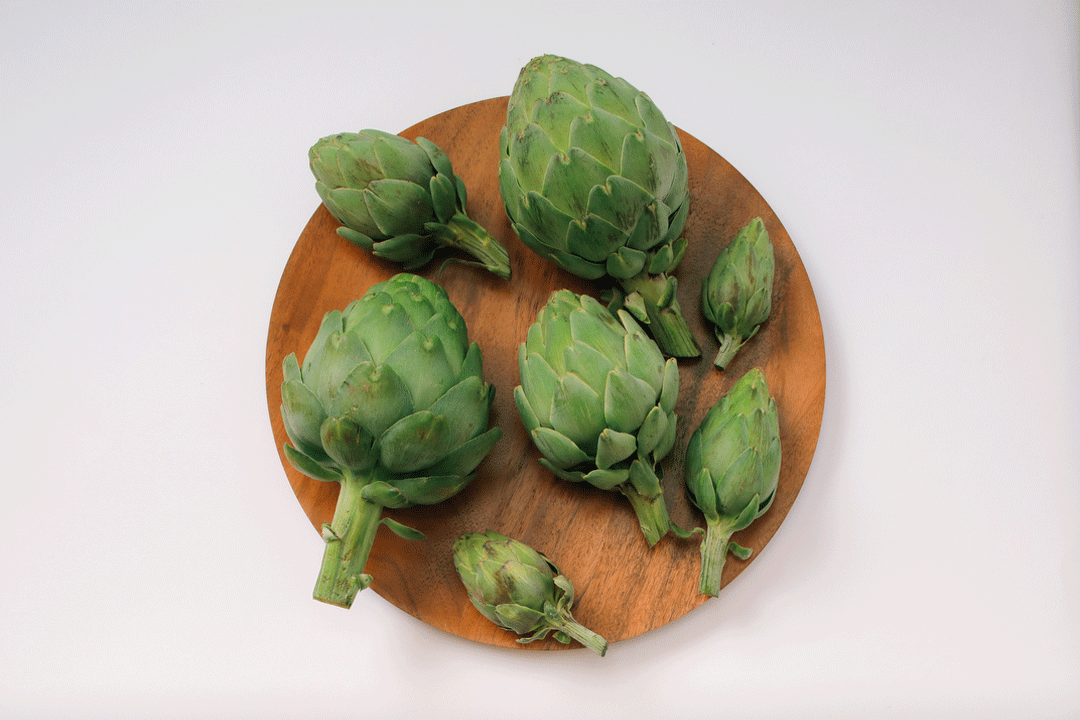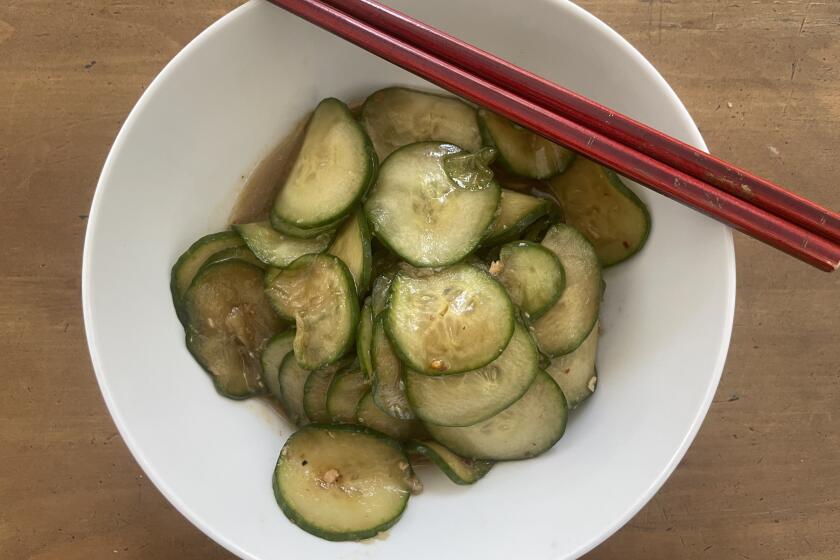There’s an artichoke glut, and here’s 12 recipes to help you take advantage

The artichoke has a heart of gold but you have to dig through some sticky armor to get to it.
Good news for artichoke lovers – this winter’s screwy weather has resulted in a glut of ‘chokes in the fields and in the markets. According to Kori Tuggle of the grower cooperative Ocean Mist Farms, between the warm weather and that recent shot of rain, all of the artichokes have come on at one time, meaning lots of chokes and low prices.
Roughly 80% of the artichokes that are grown in America come from within 15 miles of Castroville, just north of Monterey. That’s been prime artichoke country since the plantings there started 90 years ago.
In fact, because these artichokes have been replanted by dividing existing root crowns every 10 years or so, you could say that you’re cooking ‘chokes from 90-year-old plants. That’s kind of the argument Ocean Mist is making, heralding their product as “heirloom artichokes.”
PHOTOS: A dozen great artichoke dishes
Green Globes such as Ocean Mist grows have dominated artichokes since the beginning, but in the last decade, other varieties have been successfully planted in areas as varied as Lompoc and the Imperial Valley.
These new varieties -- Desert Globe, Big Heart and Imperial Star are the main ones -- look very much like the classic Globes, but they differ in one significant respect. These are annual plants grown from seed, whereas Globes are perennials that are grown from root stock.
That may seem trivial, but to artichoke growers it’s key because planting from seed allows much more flexibility. They can grow artichokes as part of a mix of row crops without having to commit land for a full 10-year run.
PHOTOS: 7 delicious asparagus recipes
And while we’re talking about an artichoke glut, don’t pass up those cute little baby artichokes. They are one of the handiest vegetables around. The flavor is the same as that of the big artichokes, but the thorny bracts are more tender, and because they are so small, there is very little bristly choke in the center.
Like most other baby vegetables, artichokes aren’t really immature, but unlike most others, they don’t come from a specialized miniature variety. Instead, baby artichokes come from the same plants that throw up the big hubcap-sized ones that are so good for steaming.
Every artichoke plant produces a range of sizes -- one or two giants, a half-dozen or so mediums and a dozen or so babies. Because most people still eat artichokes only one way -- steamed and dipped in butter -- these smaller sizes often go neglected and are terrific bargains.
PHOTOS: Here’s how to clean an artichoke
Trim them just the way you do the big guys, but leave the stems attached -- they have the same tender texture and great flavor as the heart.
How to Choose: Pick the freshest artichokes by squeezing the “leaves” (actually, they’re bracts, like the “flowers” on bougainvillea). Really fresh artichokes will squeak when squeezed. Choose the artichokes that are heaviest for their size. Don’t worry too much about blackening at the stem – that’s something that happens very quickly with artichokes – but don’t buy artichokes where the stem has started to soften.
How to Store: Keep artichokes in the crisper drawer of the refrigerator.
ALSO:
RECIPES: Chard was cool before kale
RECIPES: What to do with navel oranges
More to Read
Eat your way across L.A.
Get our weekly Tasting Notes newsletter for reviews, news and more.
You may occasionally receive promotional content from the Los Angeles Times.








